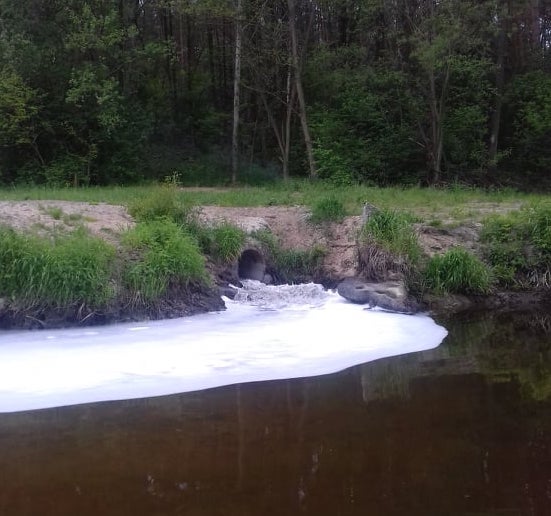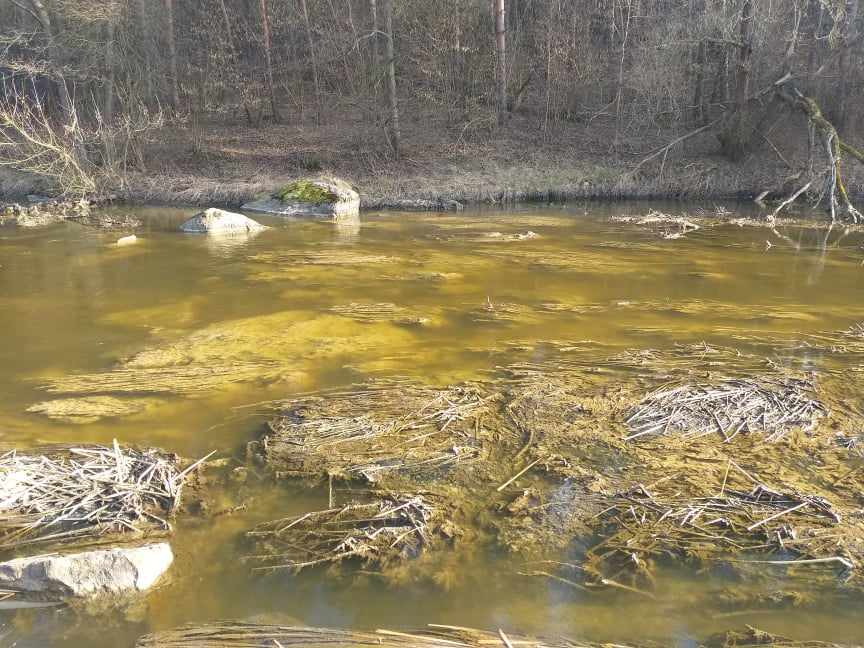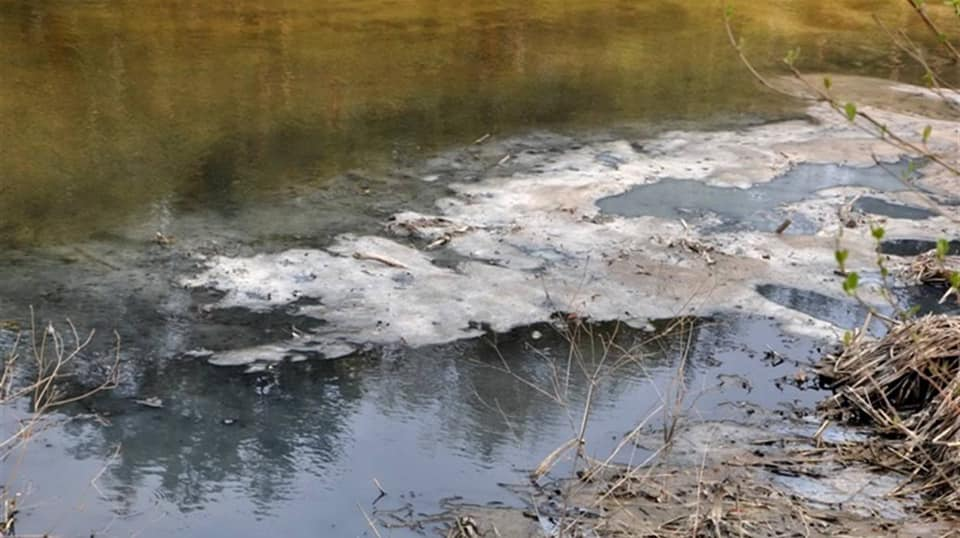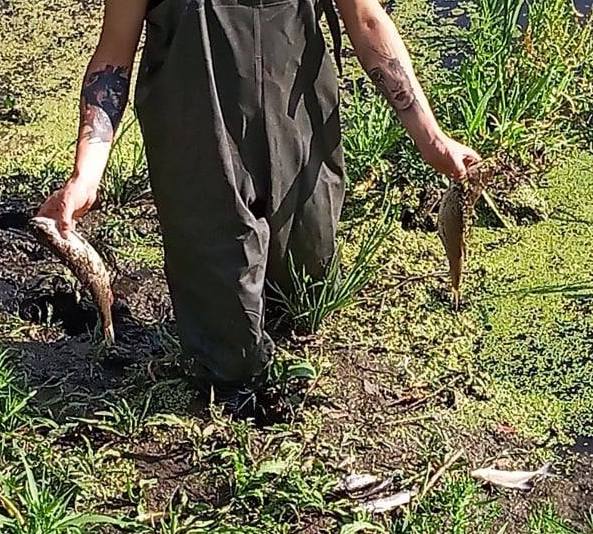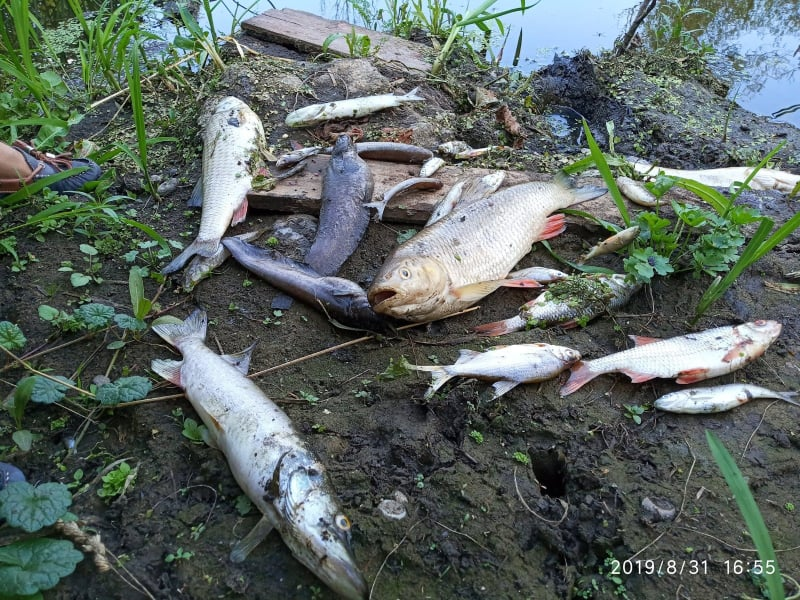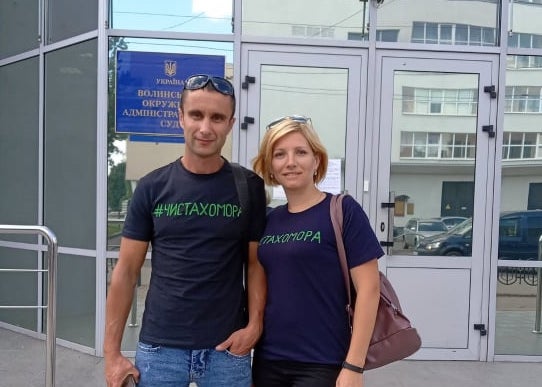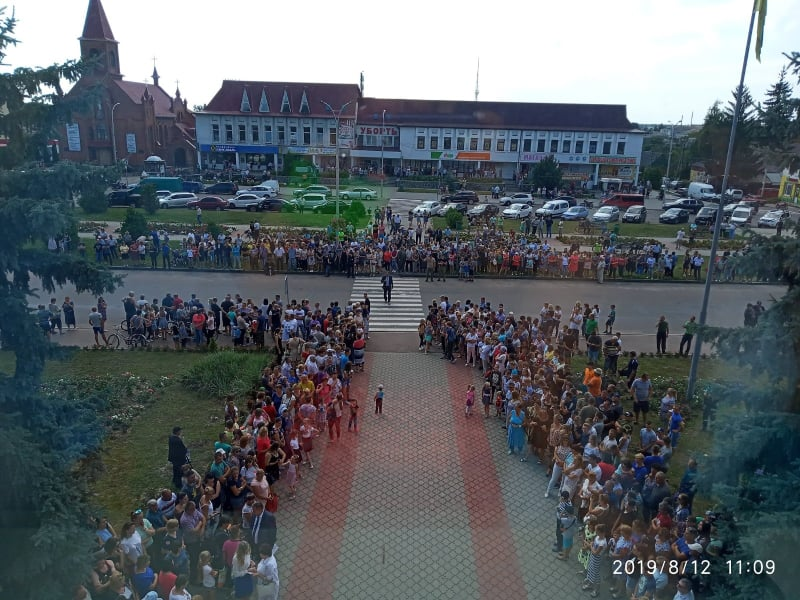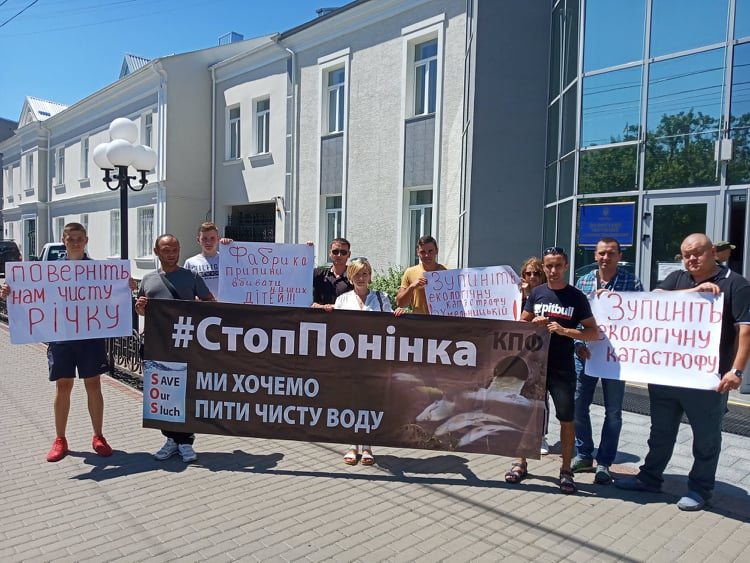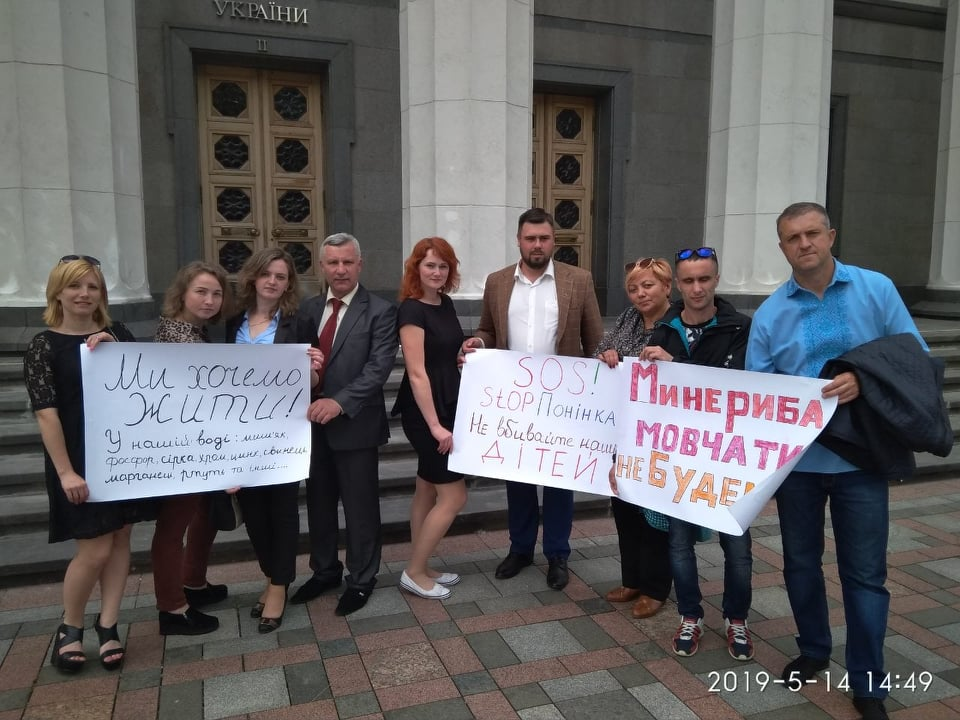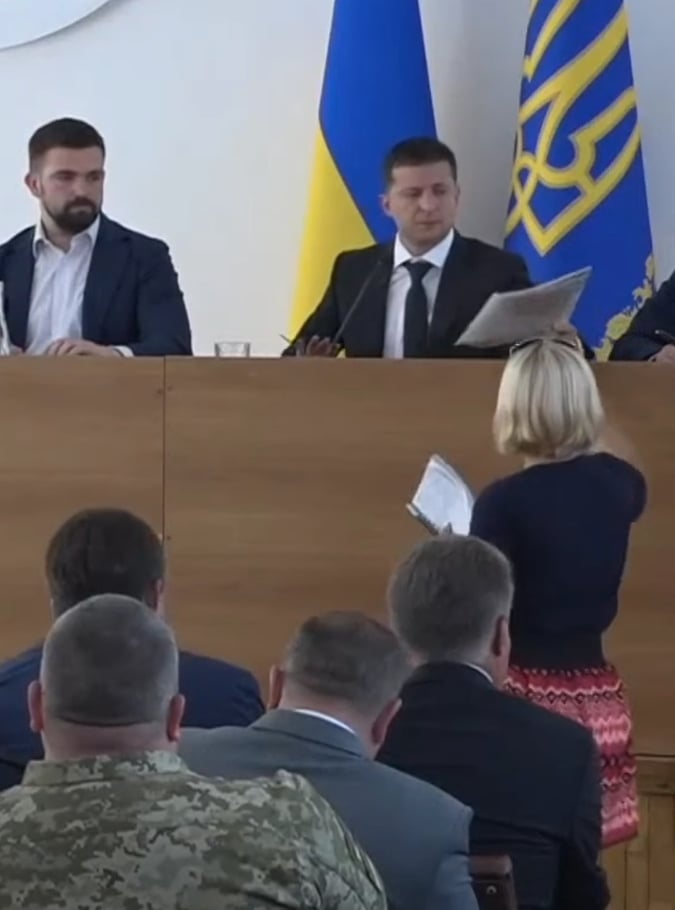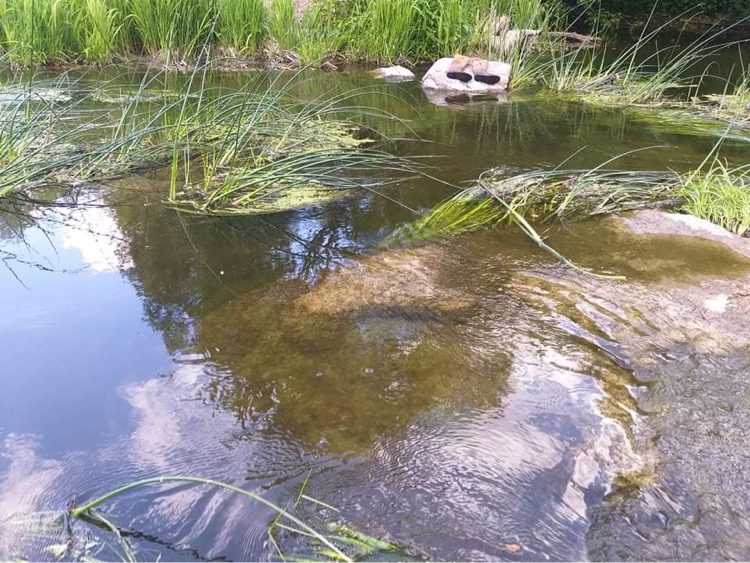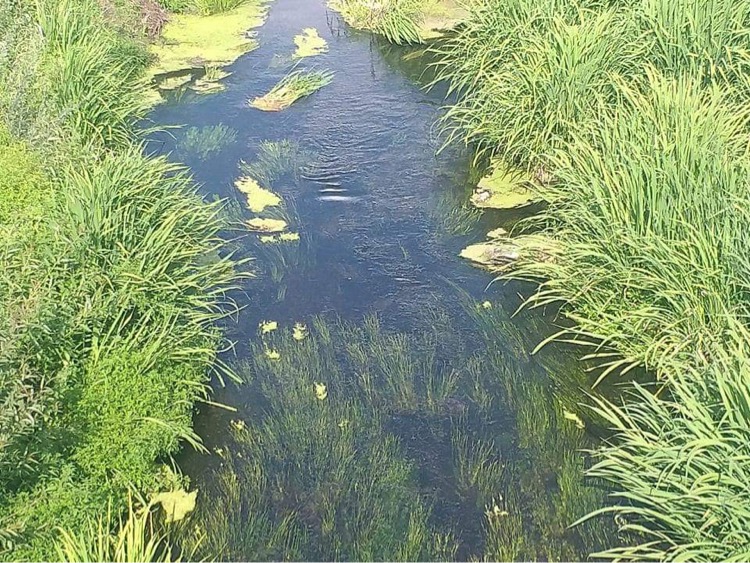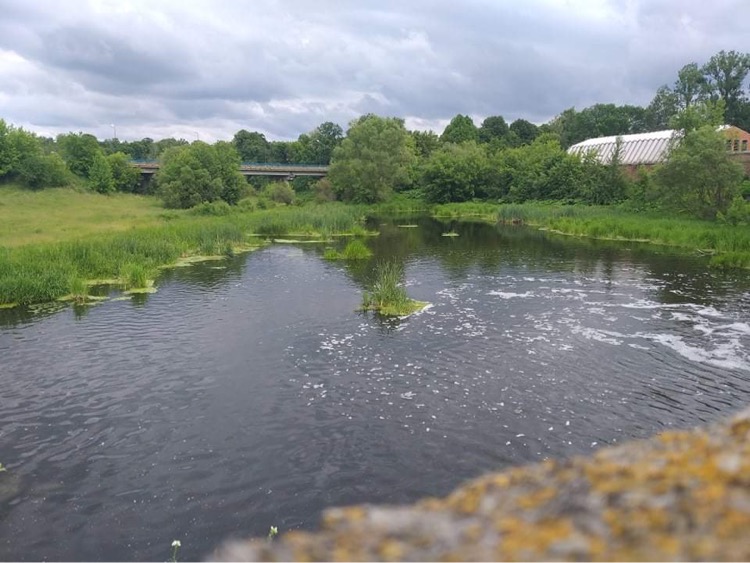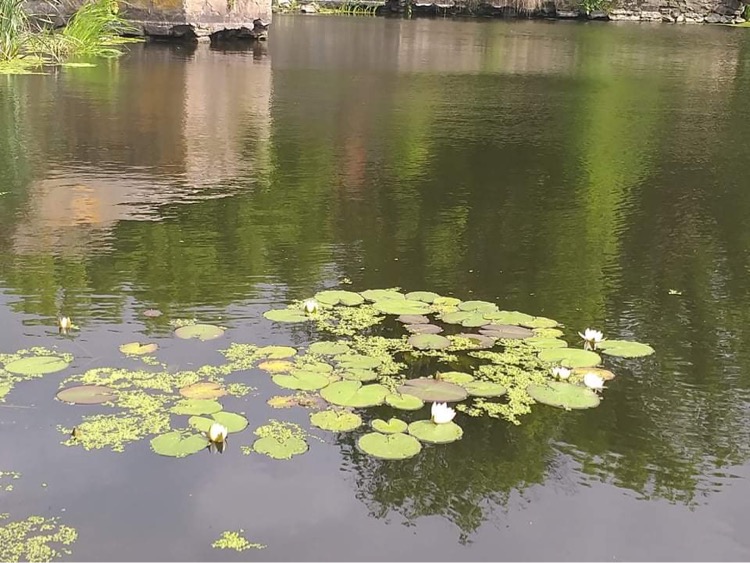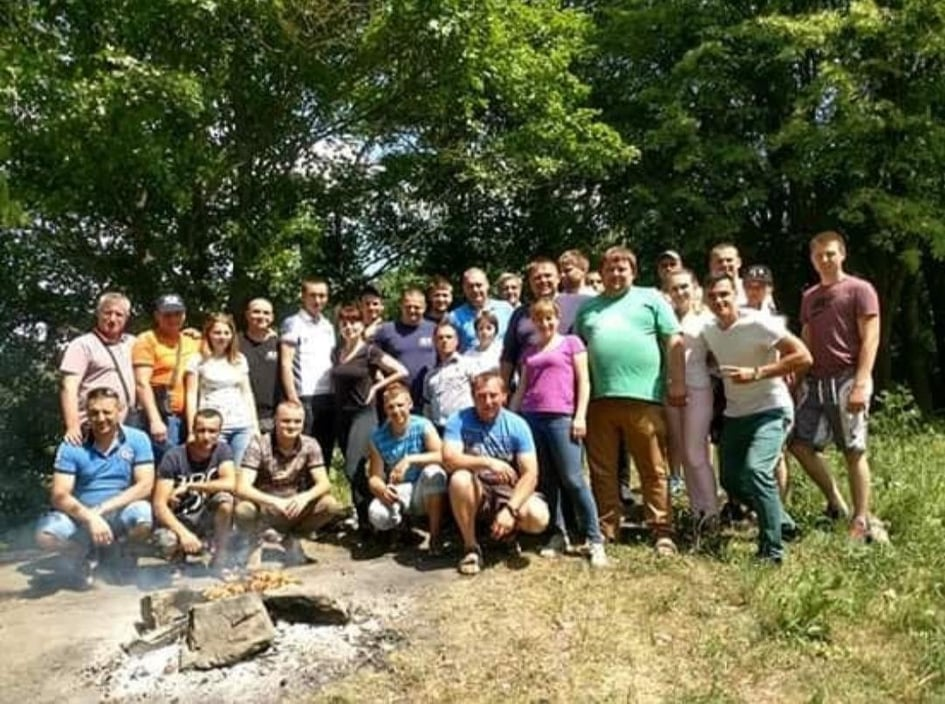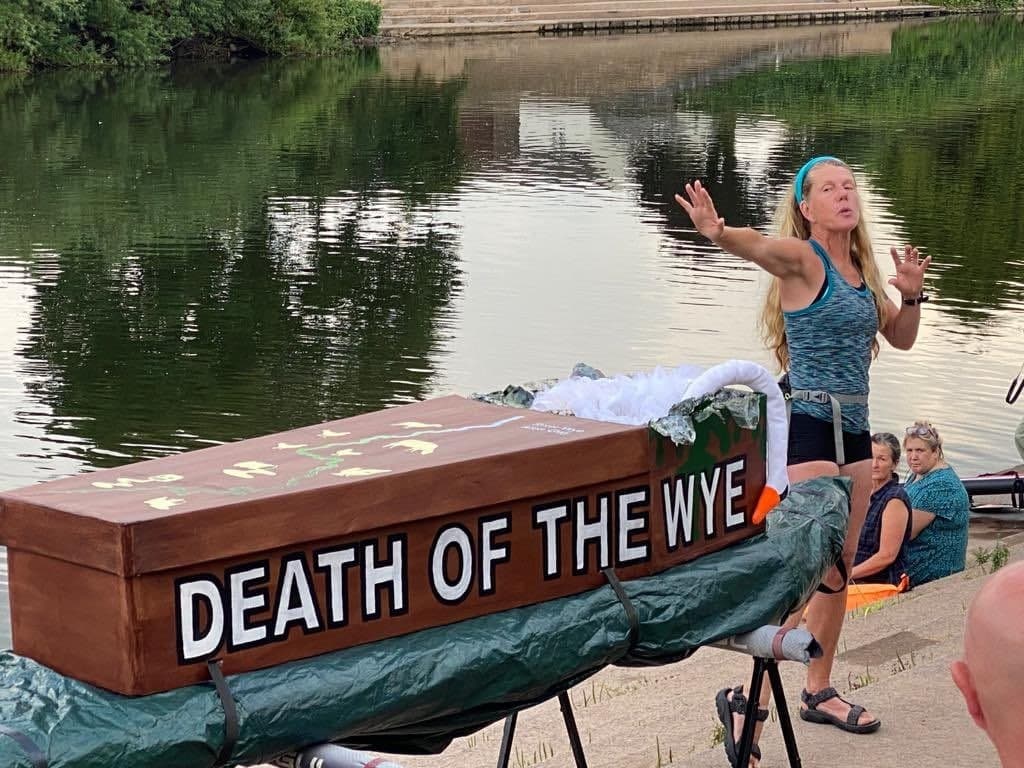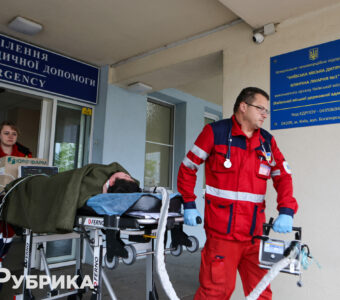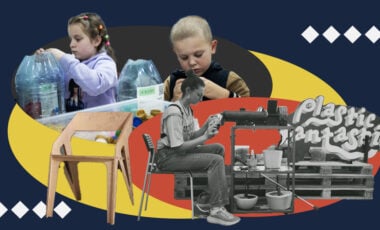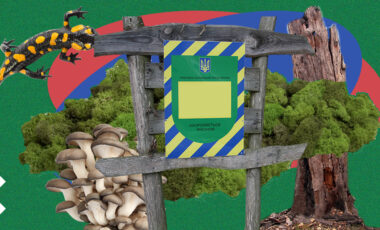Water turned into glue: how a community in Zhytomyr region saved a river
One hundred calls to the hotline after the latest emission, night shifts, and laboratory measurements. How everyone can save the environment.
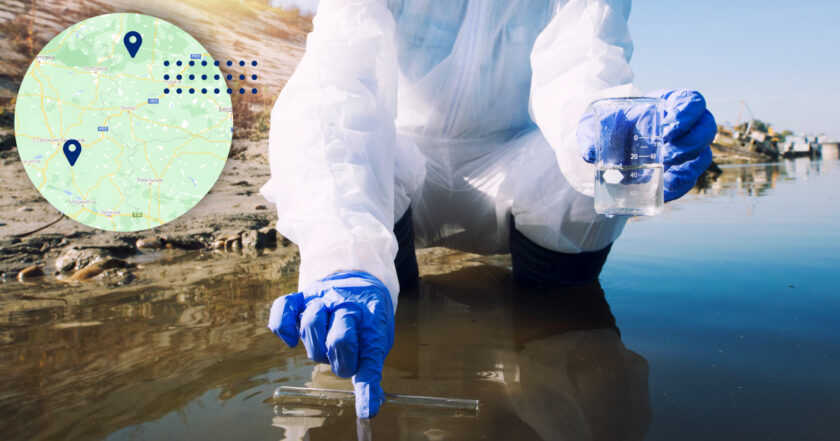
The Khomora River flows through two regions, Khmelnytskyi and Zhytomyr, and flows into the Sluch River. Locals who grew up on its shores say that once there was a paradise: beautiful scenery, lovely nature, and clear waters, full of fish and crayfish. Everything has changed since one of Ukraine's largest paper corporations, the Poninka Cardboard and Paper Factory, located on the banks of the Khomora, began dumping its production waste into the river.
From the very beginning of this story, the local community defended Khomora. It's a story about how the community managed to save the river: with hard work and a united position, the residents of the towns of Poninka, Pershotravnevsk, the cities of Novohrad-Volynskyi, the villages of Baranivka, and others won back the reservoir. Rubryka asked the activists how they came to this result and how everyone can defend the environment despite everything, and received some answers.
How did the river turn into glue?
The first pollution, after which the water quality in Khomora sharply deteriorated, river snails disappeared and fish began to die, occurred in 2016. However, the management of Poninka Cardboard and Paper Factory-Ukraine LLC denied its involvement in the poisoning of the reservoir, and the factory continued to dump waste from its production into Khomora; its waters also reached Sluch, where drinking water is taken for the city of Novohrad Volynskyi. The problem of pollution of the Sluch and Khomora rivers has become one of the most pressing issues of concern to residents of the Khmelnytskyi and Zhytomyr regions.
Even though the Poninka factory provided work for a significant percentage of locals, people couldn't remain indifferent: the stench around Khomora was unbearable. The photos of the dead Khomora, which were regularly published on social media by eyewitnesses, were awful.
In recent years, nothing alive has remained in the river. The micro cellulose dumped by the plant into Khomora turned water into real glue. The bottom of the river was lined with a jelly-like mass, in some places the layer of bottom sediments reached a meter! Swimming was strictly forbidden. Sometimes cattle that drank water from the river died. It wasn't about fish at all, it wasn't in the river for a long time. Other river creatures and animals, even those listed in the Red Book, suffered from the emissions. A video has been documented of crayfish fleeing en masse, jumping ashore from poisoned water.
The amount of damage caused to the environment was more than eloquent. The State Ecological Inspectorate estimated the losses from the next waste dump, which occurred on April 12, 2019, at over UAH 21 million.
How to save the river: from night shifts to crowdfunding
The struggle for the Khomora River (#chystakhomora) lasted 6 years. During this time, it was joined by many people. The community was active all the time because the river flows through the centers of settlements. Houses are located right on its banks. Some activists have become actual experts during this time. They not only wrote complaints but also constantly helped environmentalists, rallied the community, and knocked on all possible institutions' doors.
The struggle for Khomors was led by ordinary residents of the town of Pershotravnesk, Anna Sobetska-Muravska, artistic director of the House of Culture, and environmental activist Oleksandr Kovalenko. "Saving our river has become a matter of honor, education, and patriotism," says Anna. "It sounds a bit pathetic, but that's the way it is. Our resistance began almost immediately after the onset of pollution. It was joined by all concerned residents of the village and region."
Dozens of public hearings and negotiations with the factory management didn't yield results. The factory claimed that everything was under control, and almost the aliens were to blame for the pollution. However, back in 2016, the Institute of Colloid Chemistry and Water Chemistry analyzed the water in Khomora, after which the river was given the highest 4th level of pollution, the content of chemicals in the water exceeded the norm by tens and hundreds of times. The complexity of the situation was that the company dumped harmful substances into the water late at night. Pershotravensk was the first to receive these blows.
By joint efforts, the community managed to ensure that inspectors of the State Environmental Service went to the landfills within an hour. Active villagers themselves helped to take laboratory measurements. They showed places of discharge. They were on duty at night in the cities of emissions and recorded it on video. They wrote appeals to all government branches: the State Food Service, the State Coinspection, the Ministry of Ecology and Natural Resources, the Ministry of Internal Affairs of Ukraine, the Security Service, the police, the prosecutor's office, the Prosecutor General of Ukraine, and the Ministry of Emergencies.
When protests were held, everyone came out, from old to young. People coordinated through groups in Viber. After each discharge, all the townspeople literally bombed the 1545 Government Hotline, reporting the stench, the dirt in the river, and their feelings. Operators of the hotline recognized restless residents of Pershotravnevsk by voices.
"Once we managed to call the 1545 hotline 100 times to report another outbreak," says Anna Sobetska-Muravska. "Everyone did their job: someone was the 'eyes' or 'legs' of the community, someone took photos and collected documents, spoke in public, gathered people, was involved in the support of other NGOs. We were just fighting."
"There were times," Oleksandr Kovalenko recalls, "when we needed to go to the next meeting, and there was zero in the pocket. We turned to everyone who cared for help. From around the world, people gave 200 and some 10 hryvnias. It wasn't like that all the time. There were times when people came to despair and very often we heard the words: 'What will it give? You will not achieve anything!'"
Bring the alarm and knock on all the doors
However, environmental activists didn't give up. Again and again, people gathered for protests and rallies. They blocked roads, Kyiv-Chop and Novohrad-Volynskyi-Starokostiantyniv, and picketed the Verkhovna Rada of Ukraine and the Cabinet of Ministers. There were round tables in the Ministry of Ecology, the Ecological Committee of the Verkhovna Rada of Ukraine, the Ecological Committee of the Zhytomyr Regional Council. Briefings in the Verkhovna Rada. Meetings of the commission of technogenic-ecological safety and emergencies, Novohrad-Volynskyi and Baranivka district state administrations, and three interregional meetings with the participation of two governors and the head of the State Ecological Inspection of Ukraine. During this time, three heads of regional state administrations have changed in Khmelnytskyi!
They even reached the President. We went to all the places where the head of state could be present almost at random. We constantly heard from the organizers that "such an issue isn't planned to be considered." And in Olevsk, where the President arrived in August 2019 to represent the new head of the Zhytomyr Regional State Administration, it turned out that the names of the defenders of Khomora disappeared from the agreed lists! However, threatening to interfere with the press, they barely broke through all the borders to hand over copies of the documents that the initiative group had been collecting for years: "We had no other choice. We wanted to live normally. And they had to listen to us!"
The power of publicity
By the way, another component of the #chystakhomora project's success was the participation of the media, to which environmental activists constantly turned. According to Oleksandr Kovalenko, thanks to the comprehensive publicity of the problem in the mass media, social media, relevant environmental groups, and numerous comments on the pages of officials mentioning the river that suffers from pollution, Khomora's rescuers managed to "break the system." Extremely important were journalistic investigations and appearances on television, many reports in the news of almost all Ukrainian TV channels. Newspapers and online publications wrote about the plight of Khmelnytskyi and Zhytomyr region residents.
The situation began to move from a standstill in 2019. The first step was a lawsuit from the State Ecological Inspection for deprivation of a water-use permit. Then, in early 2020, by order of the then head of the State Ecological Inspection of Ukraine Yehor Firsov, monthly monitoring of water quality in the Khomora and Sluch rivers was appointed by the Khmelnytskyi and Polissia State Ecological Inspections. According to the results of these tests, there's no doubt that the main polluter of the Khomora River is the Poninka Cardboard and Paper Factory. Then, after another change in the management of the factory, work finally began on the construction of new waste treatment facilities. Yes, with the fight, the company was forced to go for modernization. This spring, flotation units were installed at the factory and the modernization of treatment facilities began.
The community noticed the results immediately. As of the summer of 2021, the water in the river has become transparent, with almost no nauseating odor and adhesive sediments on the bottom, there are fish, snails, and vegetation, yellow and white lilies.
What's next?
Currently, the factory workers, together with utility service workers, are clearing the Khomora riverbed from fallen trees, which delays the bottom sediments. With the funds allocated by the authorities, the community buys an amphibious excavator to clean the bottom and finally rid Khomora of the pulp and other dirt that the factory has dumped into the river for years.
"Our victory is teamwork," Anna Sobetska-Muravska proudly tells about the results of the six-year struggle. "Oleksandr and I became public figures in this story, and numerous people remained behind the scenes. These are not indifferent people of Pershotravnevsk, Novohrad-Volynskyi, and all nearby settlements, People's Deputies Volodymyr Lytvyn and Dmytro Kostiuk, NGO "Auto Euro Power" (Novohrad-Volynskyi, Baranivka, Kyiv, Vinnytsia, Khmelnytskyi), "Aidar" military-patriotic club (Zhytomyr), NGO OUN-UPA (Novohrad-Volynskyi), public activists and public organizations of our city. Many thanks to everyone who joined our fight! Many no longer believed in solving the problem. But whoever knocks gets open doors!"
Everyone can fight
The problem of river pollution is relevant for the whole of Ukraine. Even more, for the entire world. Very often the locals draw attention to this problem, people who do care what happens to nature. The methods can be the most exotic: for example, a British woman swam on a coffin on a polluted river. The Welsh government claimed to have spent millions of pounds to improve water quality in the region's reservoirs, but the swimmer's experience showed otherwise.
"In such cases," say conservationists from the Zhytomyr region, "someone in the community needs to take responsibility and carefully gather evidence step by step and knock on all the doors but must be prepared for resistance. We went through many different situations; we were shot at, bot farms fought with us, we were admired and hated. Not everyone reached the end; some dropped their hands in despair. But, as they say: 'A river cuts through rock' and we must do everything to have clean water around us!"


